Drake’s gets a new HQ in London by Hawkins Brown
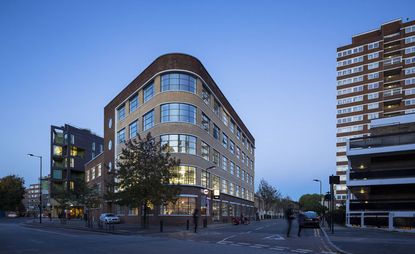
The new home of British menswear accessories manufacturer Drake's brings together its design, manufacturing and distribution arms under one roof, a former 1930s factory on the corner of the aptly titled Haberdasher Street in Hackney, east London. The scheme exposed as much of the existing structure as possible, explains project architect Nicola Rutt, a partner at London-based practice Hawkins Brown. 'We wanted to maximise the internal space and daylight and celebrate the light industrial nature of the building.'
Many of the building's original features, such as the porthole windows, the cantilevered concrete canopies, the clock and the cage for the lift have been retained or reintroduced. 'The curved brick facade is the building's strongest feature so we were keen to reinstate curved windows to every floor,' says Rutt. The architects took their client to the Crittall factory in Essex, where windows have been handmade for years using traditional processes. 'It was particularly important to Drake's that the architecture and interiors reflect their commitment to craftsmanship.'
At ground level the building contains a factory, an administration area, a meeting room and a warehouse for packing and distribution, while the first floor is occupied by the design studio and workroom where the company's ties are manufactured and undergo 18 separate quality checks. The scheme also incorporates speculative workspace and new warehouse-style apartments for rent on the upper floors and, in an interesting reinstatement of the British tradition of living above the shop, Drake's directors, Mark Cho and Michael Hill, have taken up residency of two of the nine apartments.
Here again the architects took their cues from the best that the classic 1930s structure had to offer. The herringbone pattern of the original external brickwork (and, coincidentally, the weave of many of the fabrics Drake's uses) is echoed in the detailing of the residential oak parquet floors and terrace decking. It's yet another fitting and inspired touch in a quintessentially British design project.

The brand's new HQ sits on the corner of the aptly titled Haberdasher Street in Hackney, east London
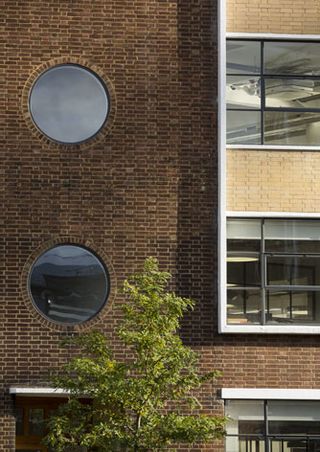
The scheme exposed as much of the existing structure as possible
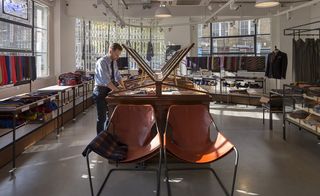
The architects aimed to maximise space and keep the building's industrial character

At ground level the building contains a factory, an administration area, a meeting room and a warehouse for packing and distribution
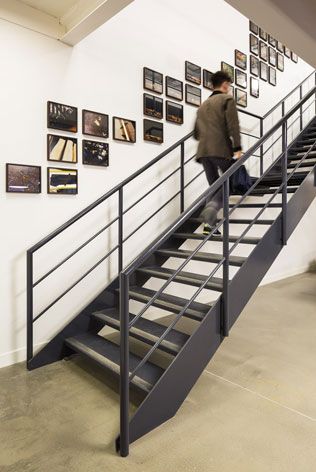
A simple metal staircase connects internally the ground floor with the facility's second level
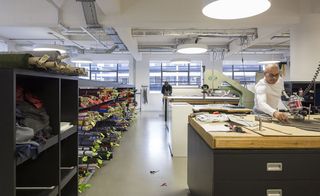
The first floor is occupied by the design studio and workroom where the company's ties are manufactured and undergo quality checks

A separate room is used as a showroom for meetings with clients

The scheme also incorporates speculative workspace and new warehouse-style apartments for rent on the upper floors

'The curved brick facade is the building's strongest feature', say the architects, who were keen to reinstate curved windows to every floor
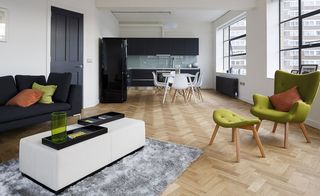
Opting for Crittall windows, the architects took their client to the company's factory in Essex, where windows have been handmade for years using traditional processes
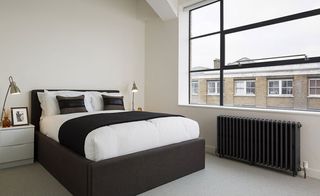
Drake's directors, Mark Cho and Michael Hill, have taken up residency of two of the nine apartments
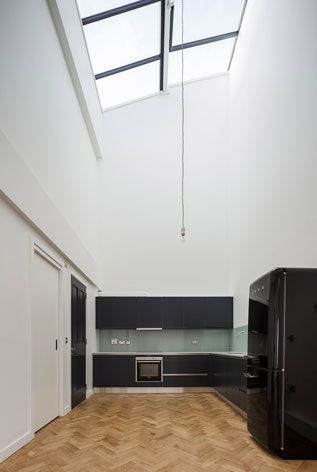
The herringbone pattern of the original external brickwork is echoed in the herringbone detailing of the residential oak parquet floors and terrace decking
Wallpaper* Newsletter
Receive our daily digest of inspiration, escapism and design stories from around the world direct to your inbox
Giovanna Dunmall is a freelance journalist based in London and West Wales who writes about architecture, culture, travel and design for international publications including The National, Wallpaper*, Azure, Detail, Damn, Conde Nast Traveller, AD India, Interior Design, Design Anthology and others. She also does editing, translation and copy writing work for architecture practices, design brands and cultural organisations.
-
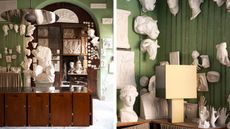 Interni Venosta is a new furniture brand by the Dimorestudio founders
Interni Venosta is a new furniture brand by the Dimorestudio foundersLaunched at Milan Design Week 2024, Interni Venosta is Dimorestudio Britt Moran and Emiliano Salci's new brand, crafted by Tuscan manufacturer Fabbri Services and paying homage to 1970s Italian design
By Rosa Bertoli Published
-
 Gucci’s ‘Design Ancora’ reimagines furniture classics in rich red
Gucci’s ‘Design Ancora’ reimagines furniture classics in rich redGucci launches new editions of Italian design icons in an alluring deep red, showcased during Milan Design Week 2024
By Simon Mills Published
-
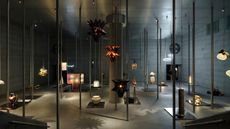 Loewe’s Jonathan Anderson drafts artists to create 24 extraordinary lamps at Milan Design Week 2024
Loewe’s Jonathan Anderson drafts artists to create 24 extraordinary lamps at Milan Design Week 2024Loewe creative director Jonathan Anderson commissioned international artists and artisans to explore ‘illumination within the house’ with a series of lamps and lighting installations, shown at a group exhibition at Milan Design Week 2024
By Scarlett Conlon Published
-
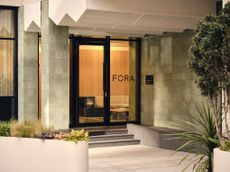 Henry Wood House’s postmodernist bones are refreshed by Nice Projects in London
Henry Wood House’s postmodernist bones are refreshed by Nice Projects in LondonNice Projects breathes new life into the Henry Wood House in London, offering ample flexible office spaces for modern workers
By Daven Wu Published
-
 ‘Bio-spaces’ exhibition at Roca London Gallery celebrates biophilic design
‘Bio-spaces’ exhibition at Roca London Gallery celebrates biophilic design‘Bio-Spaces: regenerative, resilient futures’ opens at the Roca London Gallery as ‘a call to action to stop designing nature out’
By Clare Dowdy Published
-
 Don’t Move, Improve 2024: London’s bold, bright and boutique home renovations
Don’t Move, Improve 2024: London’s bold, bright and boutique home renovationsDon’t Move, Improve 2024 reveals its shortlist, with 16 home designs competing for the top spot, to be announced in May
By Ellie Stathaki Published
-
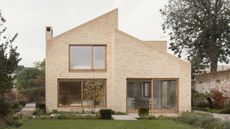 Timber-framed Wimbledon house is a minimalist, low-energy affair
Timber-framed Wimbledon house is a minimalist, low-energy affairA new timber-framed Wimbledon house is designed to blend into its traditional surroundings with a neat brick façade, careful massing and pared back interiors
By Jonathan Bell Published
-
 London Science Museum’s Energy Revolution gallery champions sustainable exhibition design
London Science Museum’s Energy Revolution gallery champions sustainable exhibition designThe Energy Revolution gallery opens at London’s Science Museum, exploring decarbonisation through sustainable exhibition design by Unknown Works
By Ellie Stathaki Published
-
 This South Downs house stands as a testament to the value of quiet refinement
This South Downs house stands as a testament to the value of quiet refinementAt one with the landscape, a South Downs house uses elements of quintessential country villas and midcentury gems with modern technologies
By Jonathan Bell Published
-
 Ash Tree House offers a contextual approach to a north London site
Ash Tree House offers a contextual approach to a north London siteAsh Tree House by Edgley Design is a modern family home in a north London conservation area's backyard site
By Ellie Stathaki Published
-
 In memoriam: John Miller (1930-2024)
In memoriam: John Miller (1930-2024)We remember John Miller, an accomplished British architect and educator who advocated a quiet but rigorous modernism
By Jonathan Bell Published